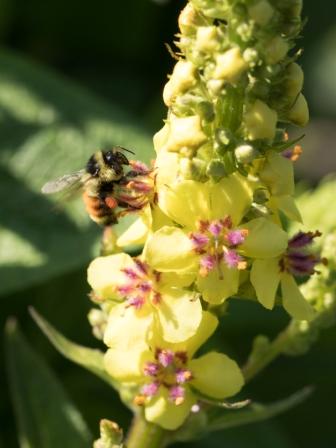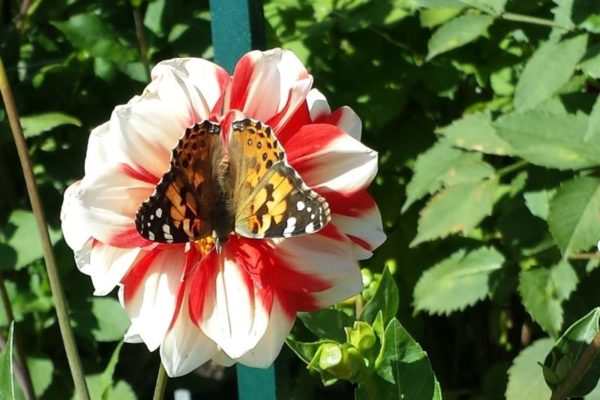Protect our Pollinators
An exciting new garden in our West Park began development in the summer of 2018. With a donation of funds from the Alberta Regional Lily Society, a six sided pergola was constructed in the center of the Habitat Garden. Our talented volunteers added a paving stone circle and a pathway that leads to the Red Willow Trail. In 2019, three raised garden beds were added and two benches will be set in place in 2020. The raised beds were built and planted with funds provided through the TD Friends of the Environment Fund.
Our focus in this area will be pollinators - who they are, what they do, why we need them and how do we protect them. Plant material in the raised beds will be carefully chosen to provide homes, food or protection for local pollinators or those passing through.
Are you wondering what a pollinator is? They include a range of wildlife from bees to birds to butterflies. All of these assist in the pollination of plants which is the process of transferring pollen from one plant to another. In order for a plant to produce seed or fruit, they must be fertilized and that is achieved when a pollinator steps in and carries out the movement of pollen.
Each of us can welcome pollinators into our gardens by planting flowering plants. Perennials often bloom only 2 - 3 weeks during the season so choose a variety with different bloom times so there is always something in flower. Annual plants entice pollinators as well. Hybrid varieties can offer larger and more prolific blooms which are very attractive to many bees and butterflies. Flowers with one or two rows of petals allow for a better 'landing pad' for butterflies and the pollen sacs in the centre are much more visible and accessible for them. Geraniums and petunias are examples of annuals which pollinators love to visit especially our beautiful little hummingbirds.

